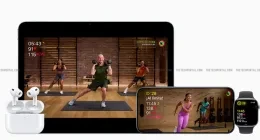With the worst of the pandemic over, at least outside India (or so we hope!), the global smartphone market is once again on the rise, recovering from the effect 2020 had on it. Consumer appetite seems to be returning to normal levels, as the first quarter of 2021 saw the worldwide smartphone market increase by 27%.
Q1 2021 saw nearly 347 million units of smartphones being shipped worldwide, an increase of 27% year–over–year, according to a report by Canalys. The Asia-Pacific region, excluding Japan and China, witnessed the strongest growth – 28%.
Seoul, South Korea-based Samsung emerged as the world leader in the smartphone market with a 22% share, shipping 76.5 million units. Apple came a close second (fueled mostly by its iPhone 12 and iPhone 11 models) with a 15% share and shipping 52.4 million iPhones. Xiaomi, which has maintained its position as numero uno in the Indian smartphone market (it dominates 28% of the Indian market and shipped 10.5 million units during Q1 2021 in the country), had the best quarter with a growth of 62% and shipping 49 million units, coming at number three worldwide. Oppo and Vivo were the others in the top five, shipping 37.6 million units and 36.0 million units respectively, while Huawei slipped to number seven with 18.6 million units. The first quarter of the year also saw LG bid adieu to the smartphone market.
The Indian smartphone market has grown as well, with smartphone shipments recording a growth rate of 11%. While Samsung became the leader globally, it came third in the Indian market with a market share of 19% and shipping 7 million units. The top five continued to have Chinese giants Oppo, Vivo, and Realme, which have market shares of 18%, 13%, and 12% and shipped 6.7 million units, 4.7 million units, and 4.3 million units respectively. The report by Canalys suggests that the growth is attributed to “favorable macroeconomic factors” that allowed the smartphone vendors to capitalize on the growing importance of smartphones for online classes and working from home during the pandemic.
This has been Xiaomi’s quarter, and Canalys Research manager Ben Stanton agrees. “Xiaomi is in pole position to be the new Huawei,” he said. “In addition to great product value, it is now also making strides to recruit local talent, become more channel-friendly, and lead in high-end innovation, as seen with the Mi 11 Ultra and its recent foldable, the Mi Mix Fold. Its competitors offer superior channel margin, but Xiaomi’s sheer volume actually gives distributors a better opportunity to make money than rival brands.” However, Stanton warned that Xiaomi faced stiff competition, especially from Vivo, Oppo, and Honor. “It has already struck supply chain deals and is now signing distribution agreements to re-enter several markets in the second half of 2021. Xiaomi is leading the pack, but the race has only just started,” Stanton added. Xiaomi’s market share in India fell from 31% to 28% this quarter.
LG’s departure from the smartphone market is symbolic of a new era in the smartphone industry, felt Canalys Analyst Sanyam Chaurasia. “It proves that aggressive pricing and channel strategy are more important than hardware differentiation in the modern-day. LG holds the majority of its share in the Americas, at 80% of its total in 2020, which presents new opportunities for the likes of Motorola, TCL, Nokia, and ZTE, particularly at price points below US$200. As the smartphone market continues to consolidate, this will not be the last time the incumbent vendors fight over the remains of a defeated brand,” he said.
Canalys felt that COVID-19 remained a major factor in the smartphone market, but no longer created a bottleneck for the industry. The supply of critical components like chipsets remained a major concern (this comes when the world is going through an acute chip shortage) and could be an obstacle in the shipment of smartphones in the coming quarters. This would drive global brands to rethink regional strategies.
“Some brands, for example, have de-prioritized device shipments in India, amid the new COVID-19 wave, and instead are focusing efforts on recovering regions, such as Europe. And while the shortages persist, it will grant larger companies a unique advantage, as the global brands have more power to negotiate allocation. This will put further pressure on smaller brands and could force many to follow LG out of the door,” Stanton said.
The Tech Portal is published by Blue Box Media Private Limited. Our investors have no influence over our reporting. Read our full Ownership and Funding Disclosure →





